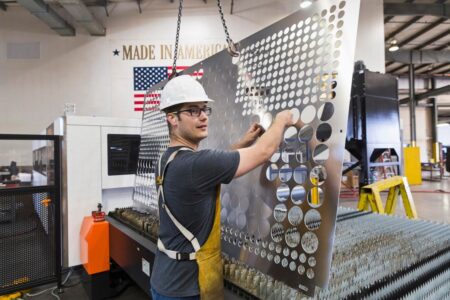Rasmus Holst, CEO at Zensai.
As we stand on the brink of a technological revolution, one truth about AI has become crystal clear: CEOs will be tasked with finding efficiencies. AI enables human-like tasks to be performed with unmatched efficiency, repeatability and scalability. This creates immense opportunities to grow businesses and save costs, the classic levers of success. However, focusing solely on AI’s operational capabilities without considering its impact on people risks undermining its long-term potential.
For decades, organizations have viewed their workforce as “human capital” or “resources.” This paradigm pits AI and humans against one another in a zero-sum game—either Mette does the job, or the AI does. Such a framework reduces people to interchangeable components, evaluated on productivity alone. But this approach is no longer fit for purpose. In a world where AI performs many human tasks, the differentiator will not be who does the job, but how effectively people and AI collaborate.
The real challenge for CEOs lies in fostering a motivated, engaged workforce that thrives in an AI-driven workplace. Today, many companies struggle with disengagement—up to two-thirds of employees report being unmotivated at work. AI’s increasing role could exacerbate this problem if leaders fail to rethink how they engage their teams. The solution lies in a new paradigm: human success.
From Resources To Success
Human success reframes the role of people in organizations. It’s not about managing resources or meeting KPIs handed down from the top. Instead, it’s about enabling employees to show up every day and do their best work. By empowering people to find innovative, efficient ways to contribute, companies can unleash a bottom-up wave of engagement and productivity.
This shift starts with redefining how we measure success. Traditional metrics, like closing all service tickets or hitting sales quotas, often feel like top-down mandates disconnected from employees’ intrinsic motivations. When people feel reduced to numbers, engagement falters. Instead, leaders must create environments where employees feel ownership of their work and alignment with the company’s goals.
Leveraging AI Without Losing Your Workforce
AI offers unprecedented opportunities to streamline processes and reduce costs. But if deployed without consideration for human dynamics, it risks demotivating the very workforce that drives innovation and customer experience. Even the most advanced AI cannot replace the creativity, empathy and problem-solving that human teams bring to the table.
In the AI era, CEOs need to be sure that their technology strategy supports—not replaces—human engagement. This involves:
1. Reskilling and Upskilling: Equip employees to work effectively alongside AI. This not only enhances their capabilities but also builds confidence and buy-in for AI adoption.
2. Fostering Ownership: Shift from top-down mandates to empowering teams to identify and implement efficiencies. When employees see their contributions as meaningful, their motivation soars.
3. Prioritizing Well-being: AI can free up time for higher-value work, but only if leaders create a culture that values balance and sustainability. Overworked, disengaged teams won’t deliver the results AI promises.
Why Human Success Matters
The cost of disengagement is too high to ignore. When employees feel undervalued or see AI as a threat, productivity and innovation suffer. By contrast, a motivated team can engage with AI’s full potential, finding creative ways to use the technology to drive growth and solve more complex problems.
In a traditional model, the CEO is the driving force, setting KPIs and steering the company from the top. But in the human success model, every employee becomes a driver, contributing to the company’s trajectory in ways that feel authentic and impactful. This bottom-up approach not only boosts morale but also delivers better business outcomes.
As we enter the AI era, leaders must champion a new system that prioritizes human success, ensuring that employees remain engaged, motivated and aligned with the company’s vision. By doing so, businesses can harness the power of AI without sacrificing the creativity and commitment of their workforce.
In the end, the success of AI isn’t actually about what it can do as its own machine—it’s about how these technological advancements empower the people engaging with them to feel inspired to achieve more.
Forbes Business Council is the foremost growth and networking organization for business owners and leaders. Do I qualify?
Read the full article here











